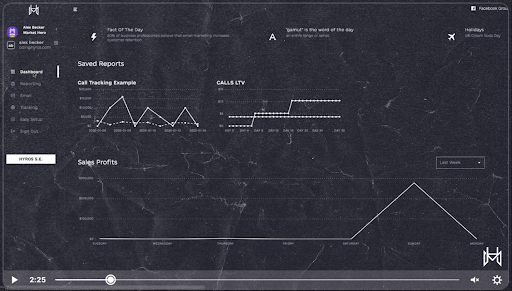Google Ads Conversion Tracking: A Step-by-Step Guide
In the realm of digital marketing, it is important to track conversions to assess the performance of your campaigns and make informed decisions to improve them. One effective tool for this is Google Ads Conversion Tracking, which enables businesses to monitor the actions of website users after they click on a Google ad. With conversion tracking, businesses can pinpoint the ads and keywords that are generating valuable actions such as lead submissions or purchases.
However, setting up conversion tracking can be intimidating for those who are new to Google Ads. In this step-by-step guide, we’ll walk you through the process of setting up conversion tracking on your website so that you can start measuring the success of your Google Ads campaigns.
Setting up Conversion Tracking
Want to take your ad campaigns to the next level? Look no further than Google Ads conversion tracking. With this powerful tool, you can unlock the secrets of successful advertising and transform your strategy step-by-step.
Step 1: Set Up Your Conversion Tracking

Tracking conversions is essential in understanding how successful your website is in driving business. It allows you to measure what actions your visitors are taking on your site, such as making a purchase or filling out a form.
To set up conversion tracking, you first need to create a conversion action that defines what you want to track. This could be a specific page on your site or a specific action that a visitor takes.
Once you have defined your conversion action, you can generate a tracking code from your ad platform. This code should be placed on the page where the conversion action takes place.
Installing the tracking code on your website can be done through various methods, depending on your platform. This process is crucial in accurately tracking conversions and ensuring that your data is reliable.
By setting up conversion tracking, you can gain valuable insights into the performance of your website and make data-driven decisions to improve your online business.
Step 2: Analyze Your Results
Achieving success in your Google Ads campaign requires a strategic approach. After setting up your Google Ads account, the next step is to analyze your results through conversion tracking.
This step is crucial in allowing you to understand which keywords and ads are performing well and which ones are not.
By analyzing your data, you can make informed decisions on where to allocate your budget and optimize your ads for maximum results.
It also helps you identify any potential issues with your website or landing pages that may be hindering your conversion rates.
Taking the time to analyze your results ensures that you are making the most out of your advertising budget and achieving the highest return on investment possible.
So, don’t skip this step – it’s the key to unlocking the full potential of your Google Ads campaign.
Step 3: Optimize Your Campaigns
Analyzing your conversion data can be the most critical step to unleashing the full potential of your Google Ads campaigns. The insights gained can help you refine your approach to targeting the right keywords, crafting messaging that resonates with your audience, and ensuring that your landing pages are optimized for maximum conversion.
With a deeper understanding of the performance of your campaigns, you can make informed decisions that lead to better results. For instance, you may find that certain keywords or ad groups are driving more conversions than others. By focusing more of your budget on these areas, you can increase your ROI and maximize your ad spend.
Moreover, through the analysis of conversion data, you can identify areas of your campaigns that are underperforming. For example, if your ads are not generating expected conversions, you can adjust the messaging, targeting, or other elements to better appeal to your audience. By refining these areas and optimizing your campaigns, you can ensure that you’re reaching the right people at the right time.
At the end of the day, optimizing your campaigns is an essential aspect of getting the desired results from your Google Ads campaigns. By taking the time to comb through your conversion data and making informed decisions, you can ensure that your ad messaging and targeting are tailored to meet the needs of your audience, leading to greater conversion rates and improved ROI. Don’t miss out on the opportunity to unlock your campaign’s full potential by overlooking this crucial step.
Step 4: Track Your Progress

As you continue to refine your ad strategy, it’s important to track your progress over time. Keep an eye on your conversion rates and adjust your approach as needed to ensure continued growth and success.
After setting up Google Ads Conversion Tracking, tracking your progress is the next crucial step.
Why Tracking Your Progress is Important for Google Ads Conversion Tracking
Tracking your progress is crucial when it comes to refining your ad strategy. By keeping tabs on your conversion rates over time, you can better understand which ads and keywords are resonating with your audience and driving sales. This information can also help you make informed decisions about how to allocate your budget and which areas of your campaign to focus on.
To get the most out of Google Ads Conversion Tracking, it’s essential to continually monitor your progress. This means regularly checking in on your conversion rates, click-through rates, and other key performance indicators (KPIs) to see how they’re trending over time. By doing so, you can identify any areas that may need improvement and adjust your approach as needed.
In addition to helping you optimize your current campaigns, tracking your progress can also provide valuable insights for future campaigns. For example, if you notice that certain keywords or ad copy are consistently underperforming, you may want to rethink your approach for your next campaign.
Whether you’re just starting out with Google Ads Conversion Tracking or have been using it for a while, tracking your progress is key to continued success. By staying on top of your KPIs and making adjustments as needed, you can ensure that your ad campaigns are delivering the results you need to grow your business.
Step 5: Test and Iterate
When it comes to setting up Google Ads conversion tracking, the final step is to test and iterate your approach to ensure accuracy. One of the first things you should do is check the conversion tracking accuracy to make sure that the data you receive is trustworthy and reliable.
Testing and iterating can be a bit of a process, and you may run into some common issues along the way. However, rest assured that these issues can usually be resolved with a bit of troubleshooting. For example, if you notice discrepancies between the number of clicks and conversions reported in Google Ads and in your website analytics, it may be due to issues with tracking code placement.
By staying vigilant and addressing any issues that arise, you can ensure that your conversion tracking is functioning properly and providing you with actionable insights to optimize your campaigns. In addition, it’s important to try different approaches and types of tracking to see which one works best and to be prepared to adjust your strategy accordingly.
Overall, taking the time to optimize your Google Ads conversion tracking can help you maximize your ROI and reach your advertising goals more effectively.
Conversion tracking is an ongoing process, so don’t be afraid to experiment and try new things. With each iteration, you’ll gain valuable insights and move closer to advertising perfection.
Unlock the secrets of Google Ads conversion tracking today and revolutionize your ad strategy for the better.
Conclusion
In conclusion, conversion tracking is crucial for any business looking to improve their online presence and increase sales. By tracking your website visitors and analyzing their behavior, you can make necessary changes and optimizations to your website to improve conversion rates. Remember to set up tracking correctly and consistently monitor your data to ensure accuracy. With these tips, you’ll be on your way to achieving your business goals and success in the online world.
